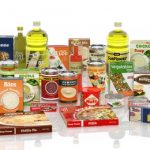
Actually no to be honest! It’s a question I’ve been asked by packaging firms when discussing what might be possible especially if it was recycled plastics for example. Polyvinyl Butyral (PVB) is not used in direct contact with food packaging. PVB is primarily known for its applications in laminated safety glass, interlayer films for architectural glass, and similar uses, but it cannot be used as direct food packaging for several reasons.
One of the principal reasons are safety concerns. PVB is not approved for direct food contact by regulatory agencies like the U.S. Food and Drug Administration (FDA) or the European Food Safety Authority (EFSA). This is because PVB is a plastic material, and certain chemicals from the plastic can potentially migrate into the food, which could be harmful to human health. It has been an issue with plastics such as PET packaging for example and the leaching of antimony into beverages.
There are question marks too over its chemical properties. PVB is not designed for the specific requirements of food packaging. Food-grade packaging materials need to meet strict standards to ensure they do not transfer harmful substances into the food and maintain the quality and safety of the products they contain.
Temperature limitations restrict its use in a number of applications. PVB has relatively low heat resistance compared to some other plastics used in food packaging. It may not withstand the high temperatures used for cooking or hot food storage.
Instead of PVB, food packaging typically uses materials like polyethylene, polypropylene, polyethylene terephthalate (PET), and polyvinyl chloride (PVC), among others, which are specifically designed and approved for contact with food. These materials are chosen for their safety, durability, and barrier properties to protect food from external factors like moisture, oxygen, and light.
It’s important to use packaging materials that are designed and approved for food contact to ensure the safety and quality of the food products. Manufacturers and suppliers of food packaging materials adhere to strict regulations and standards to ensure that their products are suitable for use in the food industry and do not pose health risks to consumers.


I like this packaging.